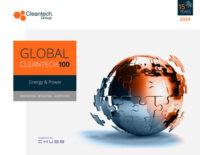The Growing Pains of the Green Hydrogen Market
The green hydrogen market is forecast to reach $1T by 2050 compared to just $260M in 2023 according to Deloitte, but despite the optimistic forecast, market participants at the Investing in Green Hydrogen Conference last month pointed out some of the key challenges plaguing the industry.
With electrolyzer producers Plug Power, ITM Power, and others facing setbacks when scaling up their electrolyzer production, manufacturers across the board are facing teething problems, such as delays in electrolyzer deliveries and unreliable performance.
Proton exchange membrane (PEM) electrolyzer developers are also faced with potential iridium shortages as South Africa, the world’s largest supplier of iridium, battles with power cuts that lead to production irregularities. Electrolyzer developer Johnson Matthey has plans to recycle iridium from waste products to reduce supply chain risk. Automation company Siemens noted that they have plans to reuse 95% of the materials.
Much has been said about the expectations of green hydrogen production costs to follow the same trajectory as solar PV costs, which have declined drastically over the last ten years. However, there are questions around the potential to reduce costs on a system level, while the overall high inflation has pushed up interest rates in the Western Hemisphere escalating project costs. A recent report by the International Energy Agency (IEA) notes that some project costs have been revised up by 50%. “It is difficult to bring the costs down and the reliability of electrolyzers is not where it needs to be,” one conference participant noted.
Furthermore, there is uncertainty in pricing as well as contracting. Due to the lack of a forward and derivatives market that would allow offtakers to hedge price risk, many are unwilling to lock themselves for longer periods. Yet offtake agreements are often required to make a project bankable. Albeit some market participants are hopeful that a merchant market will emerge in the future, producers now supply a portfolio of clients rather than a few offtakers.
Policy concerns also persist on both sides of the Atlantic. Developers in the EU are embroiled in a convoluted and lengthy application process to get access to project support. “Developers need to show a gap in funding to get access to grants,” Benjamin Haycraft, Executive Vice President of Plug Power said, indicating that this is one of the key reasons why projects in Europe get delayed. “Projects do not push ahead, as they don’t know if they will get funding. It is easier to get money from the Innovation Fund the second year you apply.”
Electrolyzer developers on the other side of the pond in the U.S. are waiting for clarification on policy. The process of applying for subsidies in the U.S. is more straightforward compared to the European Union, but the U.S. Treasury is mulling a temporal matching requirement, where hydrogen production is matched with the variations in renewable energy generation on an hourly basis, as opposed to an annual basis.
Furthermore, the U.S. is also mulling an additionality requirement that guarantees that any hydrogen that is produced from electricity is produced from additional renewable electricity. Hourly matching and additionality could significantly add to the cost of hydrogen producers.
Market participants highlight the need to utilize geographies with good renewable resources, such as Chile and Australia, as interest in distributed hydrogen projects that reduce OpEx costs by cutting down the amount of power consumed for the grid grows. Anion exchange membrane (AEM) electrolyzer company Versogen, for example, develops electrolyzers specifically for distributed resources that can be easily ramped up and down when using wind or solar PV. However, some hydrogen applications, such as green ammonia production, require a steady rate of utilization (over 40%) and cannot be ramped up and down easily, so would require on-site storage for hydrogen.
In terms of end use, most hydrogen applications currently carry a significant premium to their alternative counterparts. “All hydrogen end uses currently are not cost competitive,” Felipe Arbelaez, BP Hydrogen and CCS Senior Vice President said, adding that it is a fair to expect the price of green molecules to decline. “We need to develop technology and infrastructure to help lower the costs. The hydrogen economy should start with local applications where production is close to demand, move on to regional production with pipeline transportation, and over time shipping hydrogen will come,” Arbelaez added.
Hydrogen transportation is another sticking point with no dedicated hydrogen pipelines globally and the need for significant new infrastructure built. However, some innovators, such as Exolum, are exploring the possibility of using liquid organic hydrogen carriers in repurposed oil derivatives pipelines. This would allow producers and offtakes to increase the amount of hydrogen carried by pipelines from the current 20% mix. Pipeline transportation is currently the cheapest way to transport hydrogen.
Ammonia has been touted as one of the main carriers for hydrogen transportation, however the lead time for converting vessels to be able to carry ammonia is currently around two years. Furthermore, any shippers need to do cost calculations based on a ship’s lifetime (average 25 years) if it is worth converting the vessel. Similar to the hydrogen market, the ammonia market is also not very deep when it comes to pricing with just below 10% of all volumes traded on the spot market. “I am not seeing much investor appetite for ammonia shipping,” one conference participant said.
Amid the need for costly new infrastructure for hydrogen transportation, most participants agreed that for the foreseeable future, hydrogen production will center around key industrial load centers.



